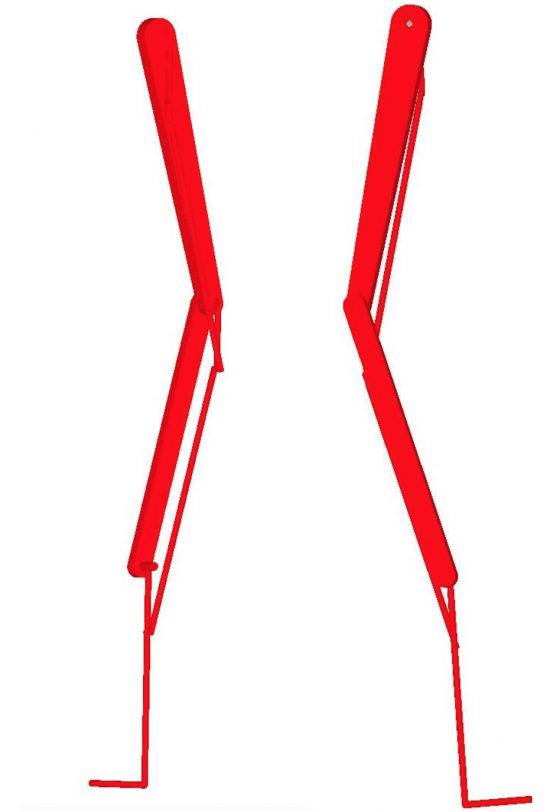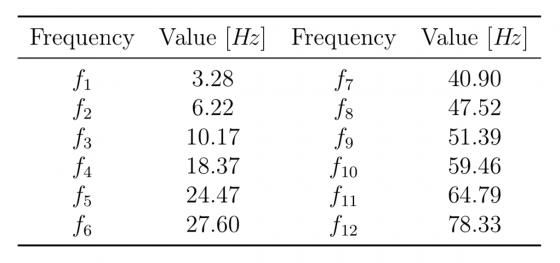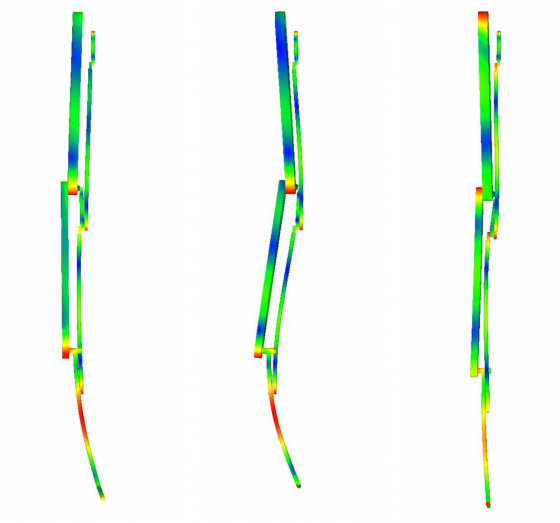Feasibility Study and Design of a Robot for Wind Tunnel Measurements
Politecnico di Milano
Politecnico di Milano wind tunnel is an excellent structure for the study of the aerodynamics of bodies, one of the largest in Europe. Inside, scale models of civil works such as skyscrapers, bridges and wind farms are tested, as well as vehicles such as cars, helicopters and trains. Probes for measurements are moved manually. The purpose of the thesis is to carry out a feasibility analysis and to design an automatic mobile pressure measurement system, an innovative robot capable of simplifying and reducing test set-up times.
Once the design of the robot has been completed, we proceed with a preliminary study of the dynamics of the system by analyzing its natural frequencies and its mode shapes. To do this, the AdamsÒ multibody software is used, inside which it is possible to import the CAD model of the robot. Note how the model used is still an approximation of the real structure, as some internal components such as bearings, pulleys, belts, etc. are not considered. However, the external parts and the arms are faithfully reproduced. The joints of the robot are schematized by means of hinges, thus reproducing the real functioning of the structure. All parts of the model are made using flexible elements in order to reproduce the behaviour of the material used, which in this specific case is steel. The mesh is realized by means of tetrahedral solid elements. Thus, the model obtained is shown in Fig. 1.

Model on Adams
The ground constraints are imposed by a hinge that represents the interaction between the first arm and the motor, while the rod that completes the parallelogram is clamped. To simulate the operation of the robot, two laws of motion are imposed: the first simulates the behavior of the motor and is therefore imposed on the first arm; the second simulates the behavior of the belt mechanism, which links the rotation of the first arm to that of the second. By running the simulation, it is possible to calculate the mode shapes and the natural frequencies for each configuration that the system assumes during motion. So it is possible to know the dynamic behavior of the structure for all possible positions. The extended configuration of the robot is taken into consideration, as it is the one in which the vibrations are more dangerous. In Tab. 1 natural frequency values lower than 101 Hz are reported.

Natural frequencies of the model
The modes that have the most chances of being excited by the force of the wind are the fourth, fifth and sixth; a view of such modes is reported in Fig. 2

Mode shapes 4, 5, 6
M.Sc Thesis of Luca Antonini
Supervision of Ing. Hermes Giberti